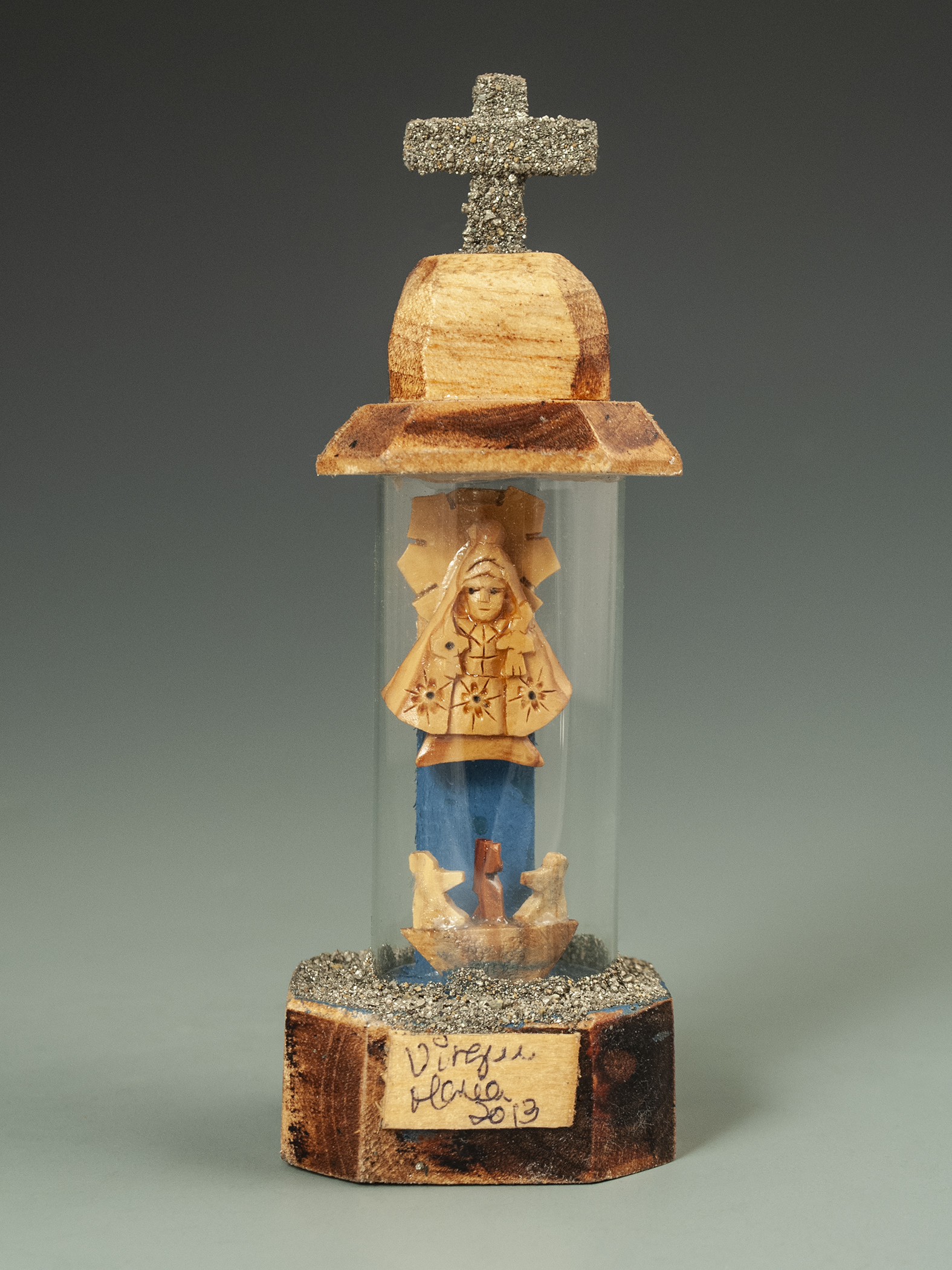Virgin Mary
Basilica de la Caridad de Cobre, Santiago, Cuba, 2013

In 2013, I led a group of travelers to Cuba. We were 17 in all, including myself, our local guide Joel, and my mother. Joel, usually vibrant, was despondent; his dog had just died, albeit at the impressive age of 19.
About 45 minutes from Santiago, near the island’s southeastern tip, stands a cathedral built around a statue: The Virgin of Charity of El Cobre. Her legend is familiar to much of the Latin American world. About four centuries ago, three sailors were caught in a storm; their small boat was tossed by wild waves. One of the three—an African slave child—wore a pendant of Mary, and prayed to the image. The sea miraculously calmed. In the distance, on the water’s surface, the sailors spied a strange object. They rowed toward it, and found a statue of the Virgin riding on the swell.
Sunflowers are sold outside the basilica, along with innumerable replicas of the Virgin, set in plastic tubes and surrounded by flakes of cobre (copper)—for the Virgin protects miners as well as seamen. My mother and I bought a wreath of girasoles from a woman with a huge bun of white hair. We placed our flowers at the altar and lit narrow yellow candles, which we affixed reverently to a white slab crowded with many other flames.
Neither my observant Jewish mother nor I felt the slightest conflict, performing our ritual in a Catholic church beneath a grisly crucifix. We had done the same, separately and together, in Indian temples, at Buddhist shrines, in African mosques and European synagogues, since my brother’s suicide in 1990. A desperate navigator of invisible tempests, Jordan had escaped his own tumultuous seascape the only way he could.
We lit another candle for the safety of our group, and one for my Mom’s deceased parents. One also for my Dad, who died when I was 30. And a candle for Joel’s dog.
We prayed. And then we emerged back into the jubilant Cuban sunlight, surrounded by sons and daughters, by sisters and brothers and jumping dogs, by fields of sunflowers, awash in an ocean of miracles.
